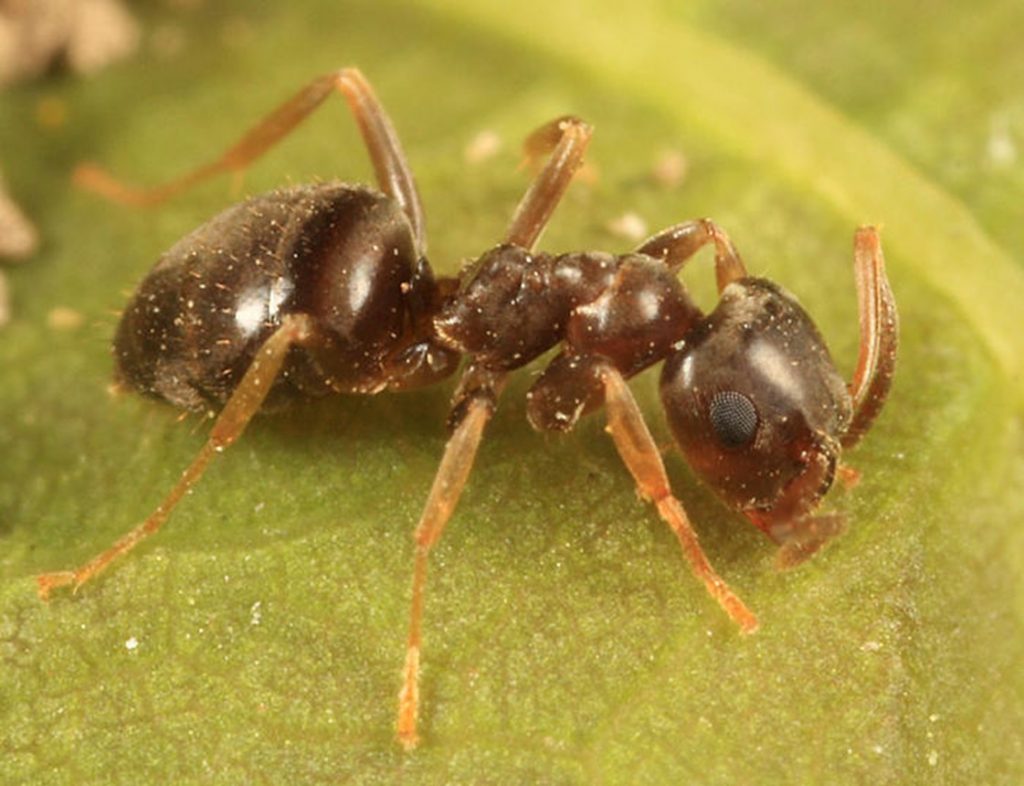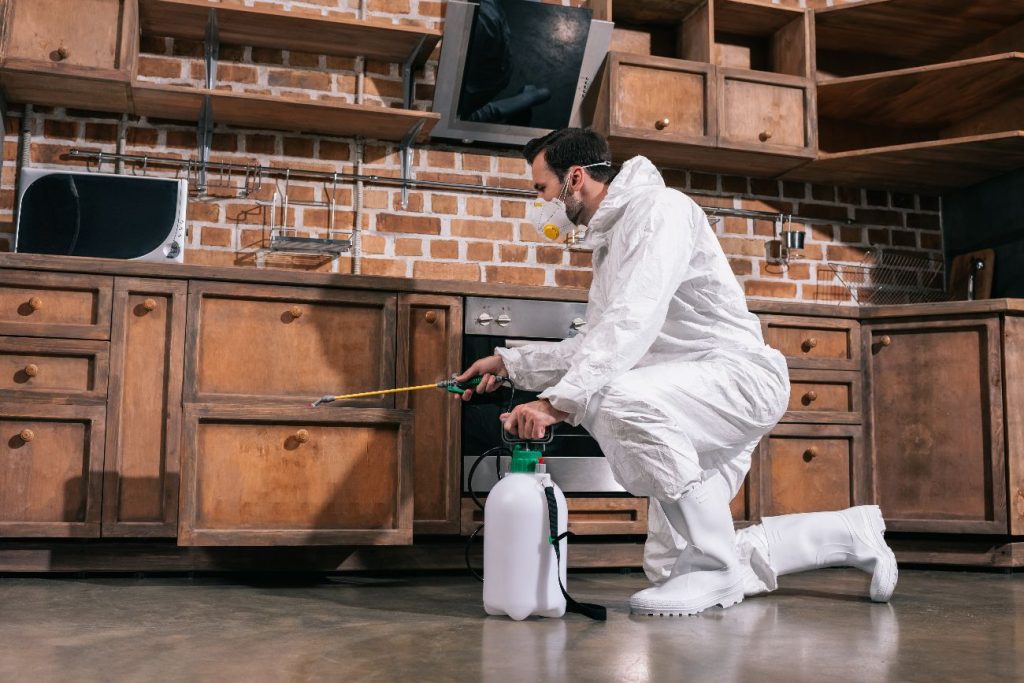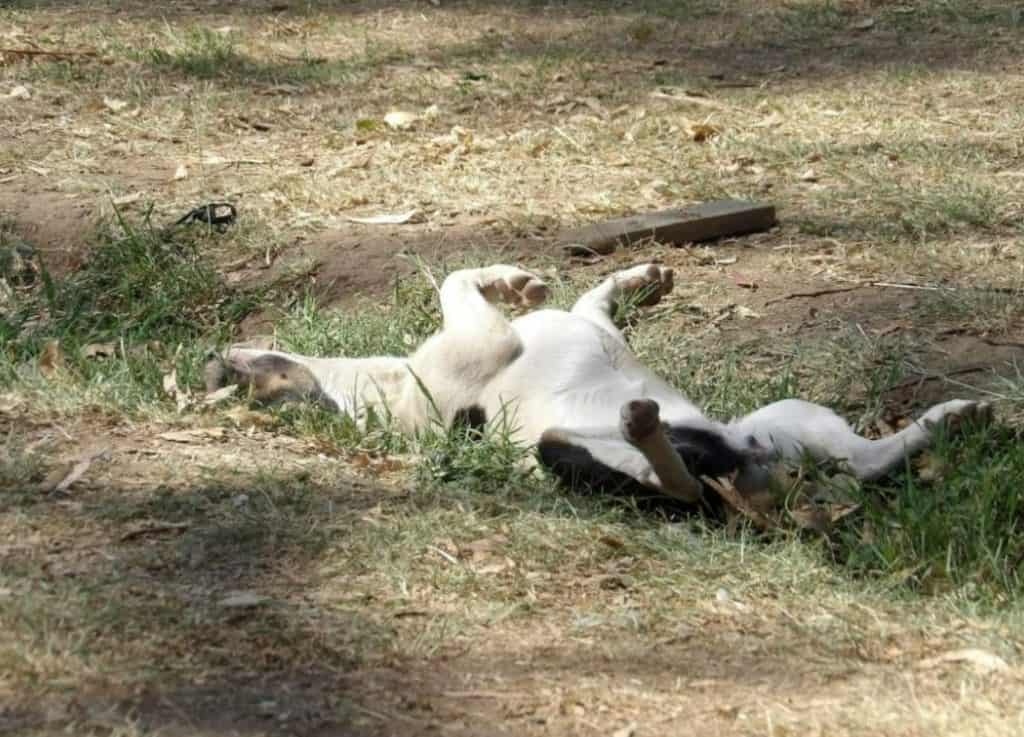Facts, Identification & Control
Moisture ant is the common name for several different species, most of which belong to the Lasius genus. What they have in common is a preference for nesting in areas of high moisture, such as wet soil and water-damaged wood.
Moisture ants are found throughout the United States and around the world. However, they are less common in the Gulf Coast states and desert states, due to their preference for high levels of humidity.
Typically, these ants are around 1/16 to 1/8 of an inch (2 to 3 mm) long. They are often black in color, but can also be yellow ants or red or dark brown to black, so color is not a reliable way of identifying these ants. These are some of the most common ants in the areas where they live, and you’re very likely to find a moisture ant colony in your home or garden.

Lasius spp.

Identification & Characteristics
- Other Names: sugar ants, cornfield ants, garden ants
- Odor: some species give off a faint citronella odor when crushed
- Color: varies from yellow to red to brown to black
- Size: 1/16 to 1/8 of an inch
- Legs: 6
- Antennae: 12 segmented with no club at the end
- Shape: 3 segmented body with an unevenly rounded thorax

Habitat
As the name implies, moisture ants like to nest in areas of high humidity. Soil that gets lots of water is a favorite choice to build a colony. They will also nest in rotten wood, especially wood that is in contact with damp soil. Unlike carpenter ants, they can’t infest sound wood, but they are capable of excavating nests in wet and rotting wood.
Outdoors, these ants often nest in decaying wood such as rotting logs, stumps, fence posts, and woodpiles. They will also nest underneath mulch, under dense shrubbery, and under rocks.
These ants often come indoors to forage for food, particularly when their outside food sources have been depleted. Because they like to feed on the honeydew produced by aphids, they often come inside after rain washes away this important food source.
Moisture ants are capable of nesting inside homes, and will naturally gravitate towards areas of high humidity. Water damaged wood is a likely place to find them, but they can also nest in wall voids where there is a water leak, in potted plants, or in damp soil underneath cracks in the foundations of the house.
In other words, just about anyone can have a moisture ant problem, making moisture ant control necessary.

Behavior
Incapable of biting or stinging humans, moisture ants are usually considered a nuisance pest. Outdoors, they eat a wide range of foods, including fruits, nuts, other insects, meat, and anything else they can find. However, like many ant species, they prefer the honeydew produced by aphids, and worker ants will actively tend these tiny bugs to protect their food source. This can lead to damage to garden plants, since the ants protect the aphids and allow their population to grow.
Inside the house, ants will seek out excess moisture and can often be found in kitchens and bathrooms, especially if there has been a leak that has created moist wood or rotted wood where ants can nest in the damp environments they like. Food in kitchens often attracts them too, especially sweets such as syrup and soda pop spills.

Reproduction
Moisture ant colonies are monogynous, meaning they have a single reproductive queen. The other members of the colony are sterile females. Colonies can be large depending on the specific species, with some nests numbering tens of thousands of individual ants.
In a mature colony, the queen will produce winged ants that are capable of reproduction at certain times of the year. These winged ants can be either male or female. On a warm day in summer, the ants will emerge from the colony and take part in a nuptial flight, where they will mate in the air. Males die soon after, and the females fly off to form new nests of their own.
The new queens will seek out an area of damp soil or rotten wood where they can start laying eggs. The first ants that hatch will be small workers that the queen will feed with her own food reserves and the muscles of her discarded wings. These early workers will then help the queen raise the next generation of ants.

Danger?
Moisture ant infestation is generally no more than a nuisance. While they can nest in wood inside your home, they can only colonize wood that has already been damaged by water, so they won’t cause any structural damage that didn’t already exist the way that Carpenter ants do. They can’t bite or sting.

Signs of a Moisture Ant Infestation
Outside, you may see ant trails established on your property, especially around bushes that attract aphids. Some moisture ant species will build small mounds above their nests. Other times, you might see large numbers of these ants close to damp wood.
Inside, the first noticeable sign of moisture ants is the ants themselves. If they find a source of food or water in your home, they will establish a trail that will attract more ants. Often, these ants can be found drinking the condensation that collects on water pipes underneath kitchen and bathroom sinks.
If ants are nesting inside the home, you may see them disappearing into cracks in walls or holes around water pipes. Usually, this indicates the presence of water-damaged wood. However, they can also sometimes nest in the soil underneath the house and emerge through cracks in the foundations. This is especially alarming when a nuptial flight emerges inside the house, which can happen if a mature nest is present. Flying ants are drawn to light and will usually head for the nearest window, so seeing lots of flying ants inside your windows is a sure sign there is a nest nearby.

Controlling Moisture Ants
If you’re looking to remove moisture ants, it’s good to know this ant species can be controlled in two ways. When you can find the nest, you can target it directly with a long-lasting residual pesticide. If the nest is indoors, aerosols and foams work great to penetrate the entire nest and kill the queen and her brood. Outdoors, saturating the soil or wood the ants are nesting in with a liquid pesticide is usually sufficient to kill the nest.
Recommended Product: Demon Max insecticide
If you’re not sure where the nest is, a better option may be to use ant bait. Ant bait contains a slow-acting stomach poison mixed with an attractive bait. The ants will carry the bait back to the colony themselves and feed it to the queen and her brood. Over time, the poison will spread through the colony and kill the ants.
Moisture ants are especially attracted to sweet liquids, so look for sugar-based bait in liquid form.
Recommended Moisture Ant Bait: Advion Gel Bait
Outdoor Control
Mound Treatment
The best method to control moisture ants outdoors is to directly target their nests. Look for mounds, and check under rocks and logs, fallen trees, or anywhere wood comes into contact with the soil, causing wood decay. Once the nest has been located, saturate it with residual pesticides such as Cy-Kick.
You can also use the same residual pesticide to perform a perimeter spray of your house to keep the ants from coming inside. Spray from ground level to a height of three feet up the walls of the house, and spray between three to six feet out from the house in all directions. Even after the pesticide is dry, it will kill any ants that come into contact with it.
If you are considering hiring an exterminator to deal with this structural pest, then check out this article which gives a comprehensive guide on exterminator prices so you can see how much it is likely to cost.

Best Products to Get Rid of Moisture Ants
Inside the House:
When dealing with moisture inside the house, the best tactic is often to use ant bait. These products are non-toxic to humans and household pets, but work to slowly poison the ant colony from the inside out. Moisture ants are very attracted to sweets and liquids, so sugar-based ant bait works great on these creatures.
A successful ant baiting program requires patience. These pesticides are designed to be slow acting. But if you give them a chance, they are a very effective way to get rid of moisture ants.
Recommended Bait Types:
Ant Bait Stations:
Ant bait can be extremely effective against moisture ants, especially when you use a liquid bait that is highly attractive to them. However, the downside of ant bait is that it can be messy. The answer to this problem is to use ant bait stations. These prefilled containers keep the bait safe from young children and pets, and they also help to keep the bait from drying out. They are very easy to use and highly effective against moisture ants.
For more information on ant bait stations click here to see our full Ant Traps and Bait Stations Review.
Recommended Ant Bait Station:
Terro Liquid Ant Bait Stations
Best Products for Outside the House:
Outdoors, you can use pesticide sprays with a long-lasting residual effect to control moisture rents. The residual effect ensures that the pesticide remains active even after it has dried. The pesticide will continue to kill ants for months after application.
You can use a residual pesticide as a perimeter spray to create a barrier around your house and keep ants from getting in. Any moisture ant nests you find can also be sprayed directly with these pesticides. Make sure to fully saturate the soil or wood that the ants are nesting in with a pump sprayer so that the chemical fully penetrates the nest.
Recommended Moisture Pesticide Spray:
If you can’t locate the moisture ant nest, or if it’s on somebody else’s property, you can also use bait outdoors to control moisture ants. When baiting outdoors, be aware that the bait can dry out quickly in hot weather or be washed away by rain, so it’s important to replace bait stations frequently.
Recommended Outdoor Ant Bait:

Preventing Infestations
- Remove tree stumps, logs, rotten fence posts, and other sources of water damaged wood from your property.
- Inspect inside your home for areas of high moisture, especially areas that have had water leaks in the past.
- Cut back tree branches and shrubs that come into contact with the house to prevent ants from using them to gain access to the building.
- Perform a perimeter spray of the house with a residual insecticide to kill any ants that come close to the building.
- Store food in antproof containers such as Tupperware or glass. Put pet food away overnight. Clean up any spills as soon as they happen, especially spills of sweet liquids which are highly attractive to moisture ants.






